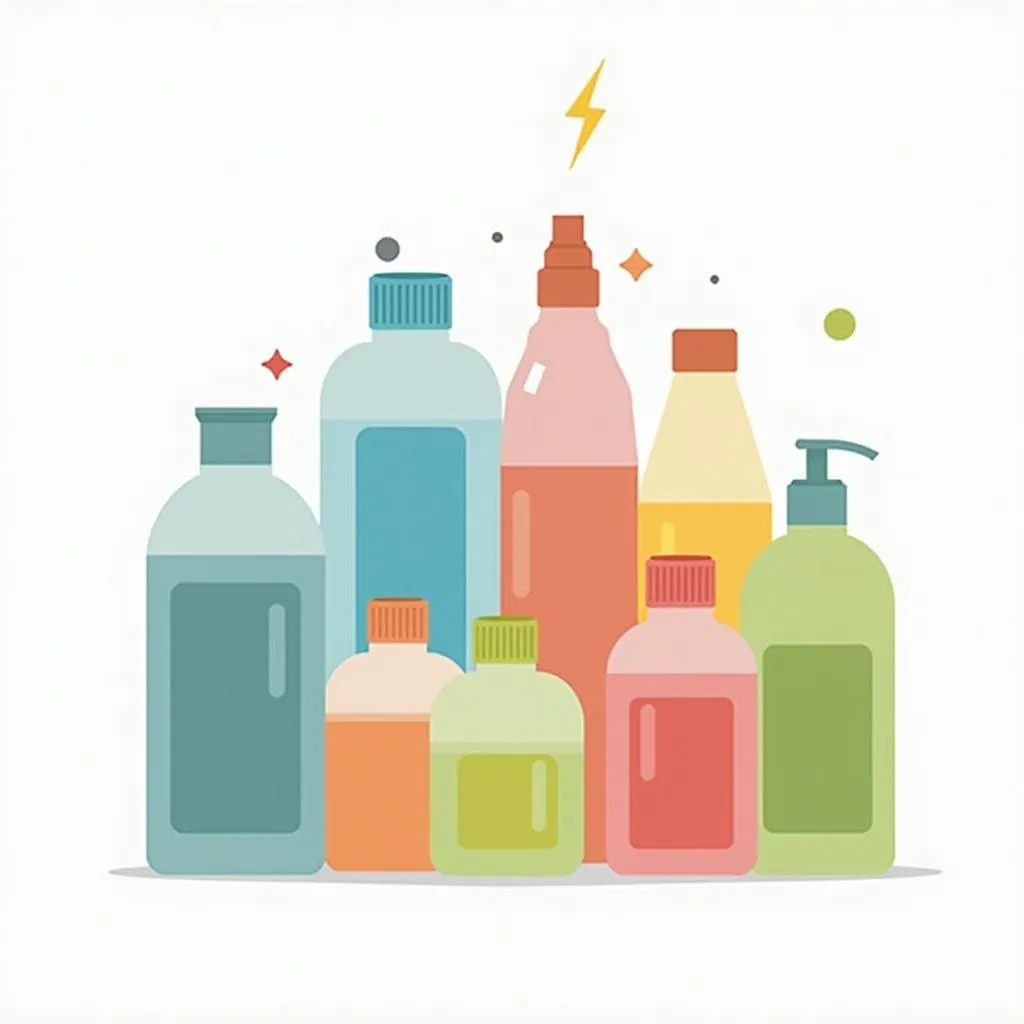“What color is G13 coolant?” is a common question among car owners. While it might seem trivial, understanding the color of your coolant can be crucial in preventing costly mistakes and ensuring your engine runs smoothly.
Decoding the Rainbow: Why Coolant Colors Matter
Coolant, also known as antifreeze, isn’t just colored water. It’s a carefully formulated mixture of chemicals designed to regulate your engine’s temperature and prevent corrosion. The color itself doesn’t inherently dictate the coolant’s properties, but it serves as a visual indicator of its specific formulation and intended use.
Using the wrong type of coolant can lead to:
- Corrosion: Different coolants use different anti-corrosive agents. Mixing incompatible types can reduce their effectiveness and lead to rust and damage within your cooling system.
- Overheating: Incompatible coolants might not mix properly, creating clumps that can clog your radiator and reduce the cooling system’s efficiency.
- Voided Warranty: Some manufacturers specify a particular coolant type for their vehicles. Using an incompatible one could void your warranty.
 Coolant Color Chart
Coolant Color Chart
G13 Coolant: A Closer Look
G13 coolant, typically purple or violet, is a relatively new formulation introduced by the Volkswagen Group. It’s known for its environmentally friendly composition and long-lasting performance. Here’s what makes it stand out:
- Organic Acid Technology (OAT): G13 relies primarily on organic acids for corrosion protection, offering a longer lifespan compared to traditional coolants.
- Glycerin-Based: Unlike older coolants that use ethylene glycol, G13 utilizes glycerin, a byproduct of biodiesel production. This makes it a more sustainable choice.
- Compatibility: While designed for newer Volkswagen Group vehicles, G13 is often compatible with older models that previously used G12++ coolant.
 G13 Coolant Bottle
G13 Coolant Bottle
Not All Purples Are Created Equal: Variations in G13
While G13 is generally associated with purple, it’s crucial to remember that color isn’t a foolproof indicator. Always refer to your vehicle’s owner’s manual or consult with a trusted mechanic to determine the correct coolant type.
Beyond G13: Other Coolant Colors and Their Meaning
The automotive world uses a spectrum of coolant colors, each hinting at its composition and purpose:
- Green: Often associated with traditional Inorganic Acid Technology (IAT) coolants, these usually have a shorter lifespan than newer formulations.
- Yellow: Similar to green coolants, yellow often represents IAT formulations. However, some manufacturers use yellow for specific vehicle models.
- Orange: Primarily used by General Motors, this color typically represents Dex-Cool, a long-life coolant with a different chemical composition than G13.
- Red/Pink: This color often indicates either OAT coolants similar to G13 or a hybrid formulation called HOAT (Hybrid Organic Acid Technology).
 Different Coolant Types
Different Coolant Types
When in Doubt, Flush It Out
Mixing coolants, even if they share a similar color, can be risky. If you’re unsure about the type of coolant in your vehicle, the safest course of action is to flush the system and refill it with the manufacturer-recommended coolant.
Conclusion: Color Matters, but Information is Key
Knowing “what color is G13 coolant” is just the first step. Understanding the reasons behind the color coding and the potential risks of using the wrong coolant is crucial for every car owner. By staying informed and choosing the right coolant for your vehicle, you can ensure its longevity and prevent costly repairs down the road.
FAQs
Can I mix G13 coolant with other types?
It’s generally not recommended to mix G13 with other coolant types, even if they share a similar color.
How often should I change my G13 coolant?
Refer to your owner’s manual for specific intervals. G13 typically has a longer lifespan than traditional coolants, often lasting up to 5 years or 150,000 miles.
Where can I buy G13 coolant?
You can find G13 coolant at most auto parts stores, dealerships, or online retailers.
Need help choosing the right coolant or have other car maintenance questions? Contact our team of experts at 0373298888, email us at [email protected], or visit our store at 86 Cầu Giấy, Hà Nội. We’re here to assist you 24/7!

